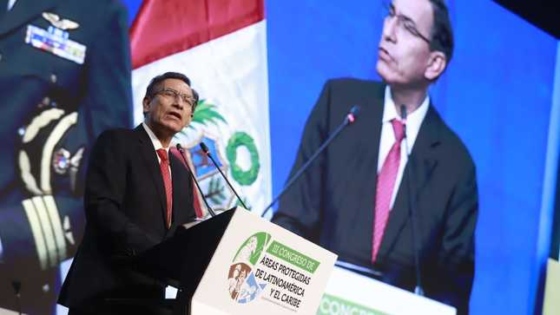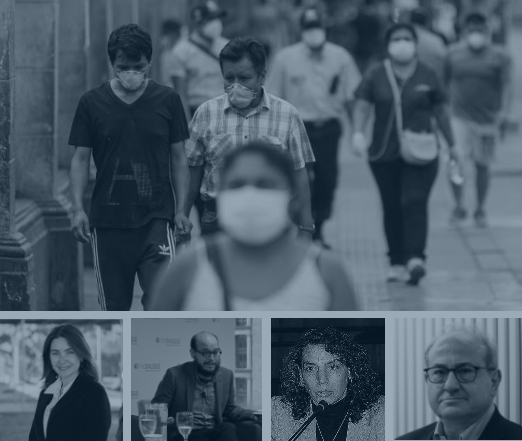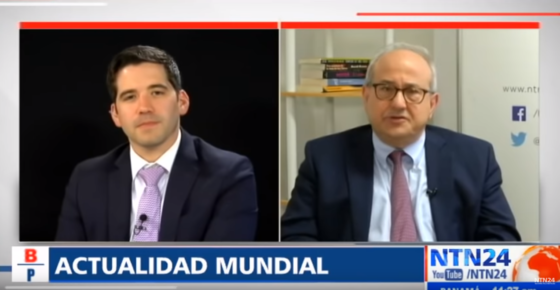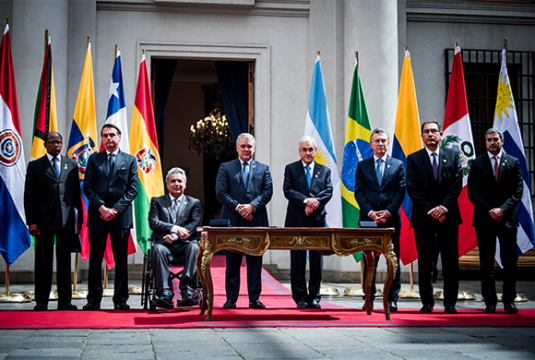
Has Peru’s Vizcarra Outsmarted His Opponents?
Is President Vizcarra more emboldened than ever after his standoff with Congress?
On June 30, 2020, the Inter-American Dialogue hosted “Peru’s Covid-19 Outbreak,” a webinar featuring Alberto Vergara, professor at the Universidad del Pacífico, Lucía Dammert, associate professor at the Universidad de Santiago de Chile, and Carolina Trivelli, senior researcher at the Instituto de Estudios Peruanos. Michael Shifter, president of the Inter-American Dialogue, moderated the event. The discussion focused on the political and institutional dimensions of the Covid-19 pandemic in Peru as the country faces some of the worst infection rates in the world.
Alberto Vergara started the discussion by focusing on two major problems that Peru will face before the 2021 elections. Principally, the main government actors in Peru operate from a very short time horizon without any long-term decision-making capability. For example, Vergara described how the congress passes bills without the technical functioning required to operate efficiently, triggering clashes with the private sector as well as the executive. The second problem lies within the electorate, who will choose from options that will appeal to short-term considerations. It will be a significant challenge for the public to overcome these incentives and vote in a government that would prioritize public services and rule of law. For this to happen, according to Vergara, a broad coalition would have to include different Peruvian regions and instill confidence and public trust.
“We are facing a major catastrophe,” declared Carolina Trivelli. She argued that the social narrative of Peru’s success in reducing poverty and managing fiscal policy is shifting as the country’s institutional deficits become clearer. The IMF estimates that Peru will face a 14 percent contraction in 2020, which will only increase poverty and vulnerability in the country. With a very small public sector, Peru lacks the spending and capability to regulate markets and connect with its citizens, which contributed to thousands of people contracting Covid-19 while waiting in long lines to collect government cash transfers in person. In this sense, Trivelli asserts, Peru’s lack of financial inclusion and high levels of inequality contributed to the current dire situation. Even so, politicians do not face many incentives to make necessary, deep-cutting institutional reforms, especially in the pre-electoral context.
Lucía Dammert proposed four major dimensions of the crisis. Firstly, the regime crisis implies that the social contract in Peru must be revisited, as it only includes a few and leaves most Peruvians in marginal spheres of society. The political crisis is best illustrated by an electoral cycle that continues without any genuine linkages to the real-life situations that Peruvian citizens face. The institutional crisis, as the previous speakers mentioned, is not the same as other countries in developing regions — although Peru was considered the “economic success of the last two decades,” Dammert stated, the country had more money than it could efficiently spend. The final crisis is the technocratic elite crisis, in which well-intentioned policies fail at the implementation phase because they lack a connection to the Peruvian populace. Dammert also described the state of the criminal justice system, which she described as potentially paving the way for an “estado mafioso” because of rampant corruption in the police, military, and judiciary. This state of affairs, however, will bring heightened violence and anti-political discourse, which does not bode well for institutional change.
During the Q&A section, Vergara stated that Peruvians are supportive of the Vizcarra government’s efforts despite their failure. Trivelli invoked her personal experience as a cabinet minister to build on her earlier discussion of the suboptimal incentives that public officials face that prevent them from making long-term reforms. In a similar vein, Dammert addressed the impunity that ministers face from a corrupt judicial system even if they engage in corrupt practices. The panelists also spoke to the Venezuelan migrant crisis, the informal economy, and the potential rise of populism in advance of the 2021 elections. Finally, the panelists closed out the event by tying Peru into the regional and global context.
Is President Vizcarra more emboldened than ever after his standoff with Congress?
Michael Shifter, presidente del Diálogo Interamericano, participó en el programa Batalla Política de NTN24, donde fue entrevistado sobre Ecuador, Martín Vizcarra, las elecciones en Argentina, y lo que podríamos esperar de un gobierno de Alberto Fernández y Cristina Fernández.
What is the political outlook in Latin America? Will Brazil’s Congress continue to govern independent of the erratic, but somewhat business-friendly President Jair Bolsonaro? Will Mexico’s nationalist-leftist president Andres Manuel Lopez Obrador (popularly known as AMLO) try to extend his power? Will Argentina’s new president Alberto Fernandez govern independently of his vice president Cristina Kirchner? Will Colombia become a new Chile in terms of riots? What will happen in Chile this year? And will Peru be able to return to political stability? Michael Shifter discussed in this interview with Latinvex.
 Main Photo: TVPeru
Main Photo: TVPeru
 Video
Video
